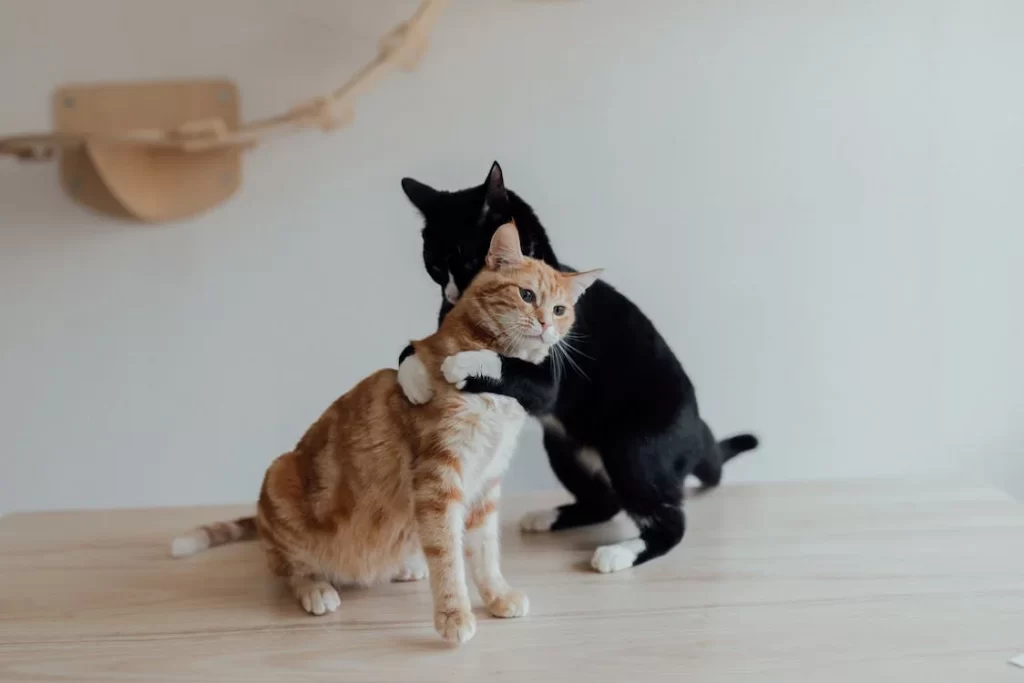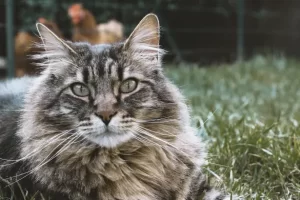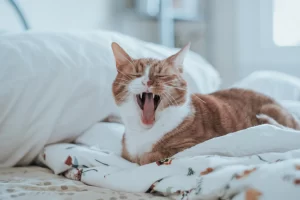Last updated on January 8th, 2023 at 11:11 pm

All animals, whether birds, insects, worms, aquatic animals, or terrestrial animals, go through mating. It’s important to understand the fundamentals of feline reproduction because it’s an essential aspect of cats’ lives. Every cat owner must consider their feline’s reproductive health since there is no escaping the reality that our felines naturally need to mate. But, as not all owners saw how this happened, the question remains, “how do cats mate?”
When male cats mate, they mount the female from behind and put their penis via the vulva. When mating, the male cat frequently bites the female on the back of her neck. A cat can mate 10 to 20 times daily for 4 to 6 days.
There is no need to be concerned if you do not know the answer to how cats mate. This article will assist you in determining the cat mating procedure. Also, what are the many stages you must take to breed your cat? Continue reading to the end to obtain all of the necessary information that will be beneficial to you.
How do Cats Mate?
When do cats start to feel the urge to mate? Female cats typically experience their first phase of being in heat between six and eight months, but some cats may have it as early as four months. Male cats typically develop at roughly ten to twelve months of age. However, some male cats mature much sooner, at around six months.
It is also important to remember that if you do not want your female cat to have kittens or your male cat to father any kittens, it is recommended to have them spayed or neutered between 4 and 6 months.
Mating is the coupling of opposite-sex animals for the goal of sexual reproduction. When a female cat is in heat and ready to mate, she will lie with her breast down, forelegs bent, and rear legs lifted with her tail to expose the vulva to a male cat. When a male cat discovers a female cat in this stance, he approaches her and mounts her. He mounts her, grips her neck with his teeth, and puts his penis through her vulva.
Most male cats have barbed penises, which produce pain when pulled from a female’s vulva, causing the female to scream. The barbed penis, according to popular belief, accelerates ovulation and ends the heat period or estrus cycle in a female cat that is not ready to reproduce.
The female cat’s ovulation period begins between 20 and 50 hours after mating. For one day, the eggs in the cat’s system will be fertile. After the eggs are fertilized in the oviduct, they travel to the uterus via the uterine horn and implant the uterine lining within 12 to 13 days. The cat will thereafter be able to give birth. For 21 days, a female cat can mate with two or more male cats. Here are some changes in your cat’s behavior that you will notice while she is in heat. When a female cat is ready to mate, she will exhibit this behavior.
- Cats get friendly.
- She begins rolling on her back.
- Yowls and wails in an unusual tone.
- Wants to go out.
- Urinates more frequently.
- Your cat uses her tail to pad her feet and elevate her hindquarters, especially when rubbed on the back.
Mating Process
To give it a more detailed explanation, this is how cats mate in stages.
Courtship
If they identify the cues, male cats will congregate around the ladies and engage in loud, gory catfights with rivals. Tomcats and queens participate in ritualized courtship that can take several hours before copulation.
Cats in the courtship period engage in pursuit and avoidance behavior. When the female is ready to mate, she will make the normal lordosis stance. Males that initiate mating too soon will face a hostile response from the female.
A male cat can respond to a female cat’s call with a specific sound known as the mating call. When a female cat receives a call, she rushes to the male cat. The discussion or invitation to mating is based on producing these calling sounds to each other.
Copulation
Copulation occurs when the male cat mounts the female cat and bites her neck to hold her in a dominance display. The female will scream, whirl, roll, or beat the male with her paw to free herself. To keep her from biting him, the tomcat grips her neck with his teeth. He bites to protect himself; biting is believed to relax the queen, preventing her from turning back and harming him. Copulation lasts only a few seconds.
The Aftermath
After the tomcat has left, the queen will roll or thrash around and clean her vulva. This is referred to as the “after response,” and it can linger for up to ten minutes. The time it takes the cats to mate is only a few minutes. After that, a queen may repeat the process if she desires. A female cat will typically continue to lick herself before preparing for another mating session. The time between two consecutive mating sessions might range from 30 minutes to an hour. If she goes for mating, a cat can mate with more than one cat.
How Do Cats Choose Their Mate?
Female cats can be picky when choosing a father for their kittens. Before meeting the female, tomcats (unneutered male cats) promote their success. Dr Bradshaw, who wrote a book called “Cat Sense”, believes they do this due to the strong odor of their urine. It has essential information for a female cat. We’ve all heard about cat spraying. The tomcat will back up to a prominent spot, such as a gatepost or a wall, elevate his tail, stand on the tips of his hind toes, and spray urine as high up as possible onto the object.
The pungent odor of a tomcat’s urine is created by a complex mixture of sulphur-containing compounds known as thiols. These are the same chemicals that give garlic its distinctive odor. Surprisingly, they do not emerge in urine until it is emptied, i.e. when it comes into contact with air. The molecules are stored in the bladder as an odorless amino acid. It was discovered in cats and given the name “felinine” since it is composed of two amino acids, cysteine and methionine. These amino acids contain the sulfur atom required to produce the pungent odor.
Importantly, cats cannot produce these amino acids through their metabolism. A tomcat’s ability to make felinine is determined by the amount of high-quality protein in his diet. In turn, how successful the tomcat is as a hunter determines how successful the wild cat is. As a result, there is a link between the pungency of his urine and his prowess as a hunter, and thus his ability to collect food. The female cat will recognize this link and will be hunting for a male cat who is good at acquiring food for her offspring.
Scientists are investigating how female cats might associate a urine mark with the tomcat who left it. Other than the stinky sulphur compounds, some other indicator must give them a hint. The odor of his pee is “a badge of honor” for a tomcat. A sick tomcat will be unable to find enough food to produce smelly pee.
According to Dr. Bradshaw, the evolution of this signal in pee was most likely driven by females picking males based on how stinky their urine is. Males who are unable to produce felinine will be rejected by females. Non-feral cats that are not neutered should be fed high-quality commercial food to make them more appealing to females.
Conclusion
So that was everything you needed to know about how cats mate. This article has all of the solutions to your cat mating questions. Remember, pregnancies at a young age are strongly avoided since her half-grown body simply cannot handle the stress of pregnancy. She would also be more vulnerable to certain malignancies and infections of the reproductive tract.
Many people mistakenly believe a cat should have at least one litter before spaying. This is entirely false. You must have your feline buddy spayed or neutered as soon as possible. We do hope that we answered all your questions and that we provided the information you needed about how cats mate. It’s not an easy journey to become a fur parent, and we always hope to give our readers the best answers.


